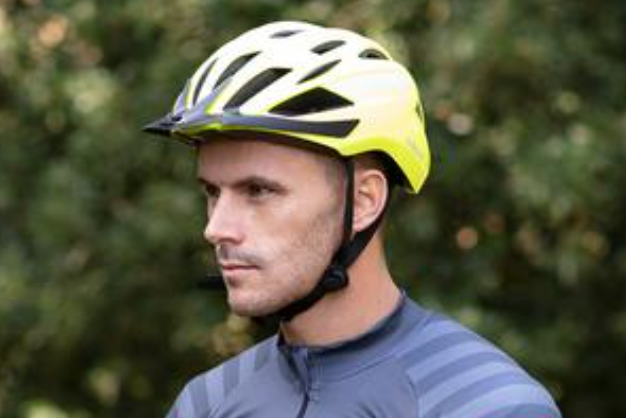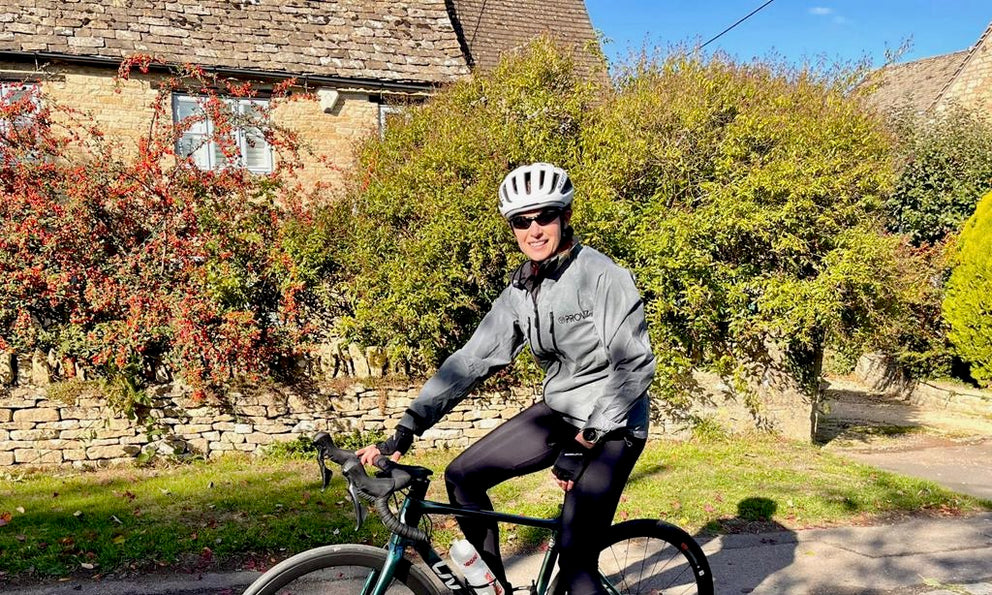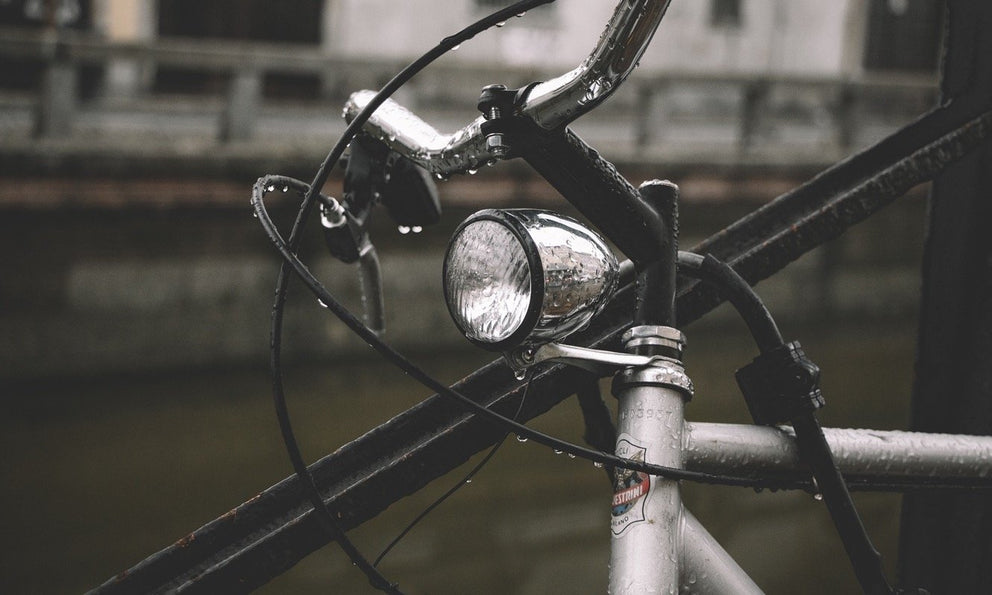Cycling is a great way to stay fit. Whether you’re commuting, training or simply getting out to enjoy the outdoors, staying safe on your bike is a crucial part of keeping fit and healthy. And a good helmet is a cornerstone of this.
Wearing a helmet is one of the best and easiest ways you can protect yourself on the road. Put simply, it could save your life. But it’s not just about wearing any helmet. It’s about wearing the right helmet. In our bike helmet size guide, we’ll walk you through the steps you need to take to get a perfect fit that ensures you stay safe.
What size bike helmet do I need?
It sounds like it should be easy. Yet finding the right size helmet can be tricky. A helmet that’s too big won’t protect your head properly if you have a crash. Likewise if it’s too small, with the added discomfort making you less likely to wear it. Knowing how to measure bike helmet size is key to striking the right balance.
The challenge is that not all sizes are made equal. Sizes can vary between manufacturers and styles, while head shapes can also differ. The right helmet should feel secure and comfortable. It won’t slide around or wobble too much, or feel too tight. It’ll sit level on your head without any pressure points.
Bike helmet sizes explained
Helmet sizes typically range from extra small to extra large. Within each size, there’s usually an adjustable range that means the helmet can cater for different head shapes. This allows you to adjust your helmet so it fits perfectly. Different manufacturers and countries have different size ranges, but you can expect the sizing to be something along the lines of the below.
Extra small (XS): Extra small helmets are suitable for infants and sized around 44cm to 49cm.
Small (S): This covers a range of about 49cm to 52cm, which is usually suited to toddlers and children.
Medium (M): This size can fit older children as well as the average adult head, running from around 52cm to 58cm.
Large (L): A range of 58cm to 61cm will fit adults with larger head sizes.
Extra large (XL): Helmets sized over 61cm are tailored for adults with significantly larger head sizes.
Most helmets have a mechanism to adjust the size within these ranges. This could be a dial or adjustable straps, which allow you to find a secure and comfortable fit. Remember that your helmet should fit snugly without being uncomfortably tight, and shouldn’t move around when you shake your head.
How to measure your bike helmet size
It’s pretty straightforward to measure your cycling helmet size. The only thing you need is a flexible tape measure. Simply wrap the tape around your head, about an inch (2.5cm) above your eyebrows. This should be the widest part of your head.
Make sure the tape’s snug but not too tight and level all the way around, then take your measurement. Now you can check the sizing chart of the helmet you’re interested in. If you’re ordering online, don’t forget that you’ll be able to fine-tune the fit by adjusting your helmet when it arrives.
How to adjust the fit on a cycling helmet
It should be quick and easy to get your helmet fitting perfectly for maximum safety and comfort.
- Adjust the fit. Modern helmets usually have a dial or slider for adjusting the fit. Place the helmet level on your head just above your eyebrows and use this dial to tighten or loosen your helmet.
- Position the straps. The straps should form a ‘V’ shape around each ear. Adjust the sliders under your ears until you get this with the straps sitting just below your earlobes.
- Buckle the chin strap. Fasten the buckle under your chin and tighten so it’s snug. You should only be able to fit one or two fingers between the strap and your chin, and you should feel the helmet press against the top of your head when you open your mouth wide.
- Final check. Shake your head a few times to make sure your helmet stays in place and feels both comfortable and secure.
Between sizes – sizing up or sizing down
If you find yourself between helmet sizes, it’s typically better to size down rather than up. A helmet that’s too large can move out of place or become loose in an accident. Even if it’s only a little bit too big, this can hugely reduce the helmet’s protective capabilities.
As long as a helmet isn’t uncomfortably tight, a smaller size offers a more secure fit. You can use the adjustment mechanism to make the helmet as comfortable as possible, while ensuring it sits level on your head around an inch above your eyebrows.
How do kids bike helmet sizes work?
If you have kids, you’ll want to do everything you can to make sure they stay safe on the road. Just like adults, head circumference is the key measurement. Helmets should fit comfortably and securely for optimal protection, and usually come with a range to adjust the size as needed.
As a general rule of thumb for kids bike helmet sizes:
- Helmets for infants typically range from 44cm to 50cm.
- Helmets for toddlers usually span from 46cm to 52cm.
- Helmets for young kids often cover a range of 48cm to 55cm.
- Helmets for older kids range between 52cm and 58cm.
How do you choose a bike helmet for a child?
Choosing the perfect bike helmet for your child involves a few key steps. Firstly, measure the circumference of their head following the instructions above. You can then use this to find out which size range they’re in. Make sure that the helmet you’re interested in holds the CE EN 1078 certification, which is the European standard for safety.
It’s a very good idea to get a helmet that’s reflective, meaning your child will be seen better if they ride their bike when it’s dark. Bright colours enhance visibility day or night, while you should also ensure the fit’s spot on before they get on their bike.
FAQs about bicycle helmets
What size is a bike helmet for adults?
A medium or large helmet is the most common size for adults. Medium helmets typically cover head sizes from 52cm to 58cm, with large helmets covering around 58cm to 61cm.
Should a bike helmet be tight or loose?
Bike helmets should fit snugly, without being too tight or too loose. They should sit level on your head without wobbling or sliding. It’s considered safer for a helmet to run smaller than larger, as a helmet that’s too big can become loose in an accident.
What age is a 54cm helmet for?
A 54cm helmet typically fits older children or adults with a smaller head size. Age is not the determining factor in helmet size – the circumference of the head should be measured to determine what size is needed.
What size is a kids medium helmet?
A kids medium helmet typically ranges from around 52cm to 58cm. This can vary between manufacturers and country, but will generally be suitable for older children, teenagers and adults with smaller head sizes.
What size helmet should a 7-year-old wear?
The helmet size a 7-year-old needs depends on their head circumference. You could typically expect a 7-year-old to fit a helmet sized somewhere between 48cm and 55cm, but it’s essential to measure the child’s head for the best fit.




 British designed
British designed











